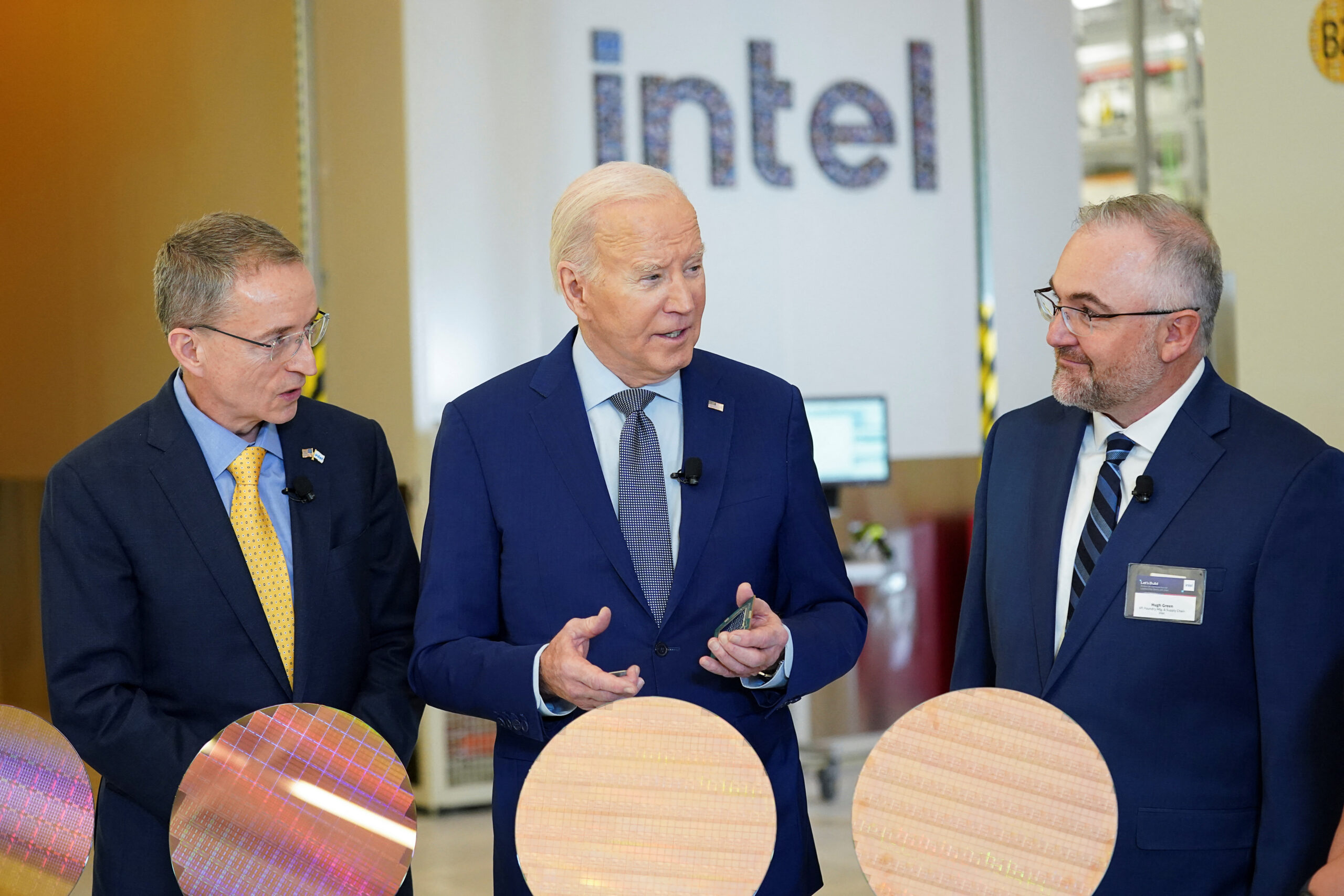Introduction
The semiconductor industry is at the heart of modern technology, powering everything from smartphones to advanced medical devices. Recognizing the critical importance of semiconductors, the United States has launched several research and development (R&D) programs under the CHIPS Act to bolster its semiconductor capabilities. This blog delves into the key CHIPS R&D programs and their roles in driving innovation and strengthening the semiconductor ecosystem.
Follow us on Linkedin for everything around Semiconductors & AI
1. CHIPS National Semiconductor Technology Center (NSTC)
Overview
The NSTC aims to be a hub for semiconductor research and development, fostering collaboration between government, industry, and academia. This center will drive advancements in semiconductor technology, addressing the industry’s most pressing challenges and paving the way for future innovations.
Key Objectives
- Innovation and Collaboration: By bringing together top minds from various sectors, the NSTC will facilitate groundbreaking research and development projects.
- Infrastructure Development: Establishing state-of-the-art facilities to support cutting-edge semiconductor research.
- Technology Transfer: Ensuring that innovations move swiftly from the lab to the market, enhancing the competitiveness of the U.S. semiconductor industry.
Function:
This ambitious initiative aims to be the heart of the CHIPS Act’s R&D efforts. It will establish a consortium, a collaborative effort between public and private entities, to drive innovation in the semiconductor industry.
Focus Areas:
- Accelerating groundbreaking research on next-generation chip technologies.
- Addressing the critical need for a skilled workforce through education and training programs.
- Fostering collaboration between universities, industry leaders, and government agencies to tackle industry-wide challenges.
Read More: Why GlobalFoundries Abandoned the Sub-7 nm Race: A Detailed Analysis – techovedas
2. CHIPS National Advanced Packaging Manufacturing Program (NAPMP)
Overview
The NAPMP focuses on the development of advanced packaging technologies, which are crucial for enhancing the performance and efficiency of semiconductor devices. This program aims to position the U.S. as a leader in advanced semiconductor packaging.
Key Objectives
- Research and Development: Investing in new packaging technologies that improve the performance, power efficiency, and reliability of semiconductor devices.
- Manufacturing Capabilities: Building robust manufacturing processes for advanced packaging solutions.
- Industry Collaboration: Partnering with industry leaders to ensure the scalability and commercial viability of new packaging technologies.
Function:
This program tackles the challenge of miniaturization and increasing chip performance. It supports the development of advanced packaging technologies.
How it Works:
Advanced packaging involves stacking multiple chips on top of each other in innovative ways. This allows for more powerful and compact electronic devices. The NAPMP will fund research to improve these stacking techniques and the materials used.
Read More: Why GlobalFoundries Abandoned the Sub-7 nm Race: A Detailed Analysis – techovedas
3. CHIPS Metrology Program
Overview
The Metrology Program is dedicated to developing advanced measurement techniques and standards essential for semiconductor manufacturing. Accurate metrology is vital for ensuring the quality and reliability of semiconductor devices.
Key Objectives
- Precision Measurement: Innovating metrology techniques to measure semiconductor components with greater accuracy.
- Standards Development: Establishing industry-wide standards to ensure consistency and quality in semiconductor manufacturing.
- Support for R&D: Providing essential metrology tools and expertise to support other CHIPS R&D initiatives.
Function:
As chip sizes shrink to the atomic level, ensuring their quality and functionality becomes increasingly difficult. This program addresses this challenge by supporting the development of new tools and techniques for precise measurement and inspection.
Importance:
The CHIPS Metrology Program is crucial for enabling the continued miniaturization of chips, a key driver of technological advancements. These new metrology tools will allow researchers and manufacturers to precisely measure and analyze chips at the atomic level, ensuring their performance and reliability.
4. CHIPS Manufacturing USA Institute (MFG USA)
Overview
The MFG USA Institute focuses on revitalizing U.S. manufacturing capabilities in the semiconductor sector. This initiative aims to bridge the gap between research and production, ensuring that innovations are effectively translated into scalable manufacturing processes.
Key Objectives
- Advanced Manufacturing: Developing cutting-edge manufacturing technologies to enhance the efficiency and scalability of semiconductor production.
- Workforce Development: Training the next generation of semiconductor manufacturing professionals.
- Industry Integration: Working closely with industry partners to implement advanced manufacturing solutions.
Function:
This program leverages an existing public-private partnership, MFG USA, which has been instrumental in driving innovation in semiconductor manufacturing.
What it Does:
The CHIPS Act provides additional funding to MFG USA, allowing it to expand its efforts in areas like advanced manufacturing processes, pilot production facilities, and workforce development programs. This strengthens the existing infrastructure for innovation in U.S. chip manufacturing.
Read More: Why GlobalFoundries Abandoned the Sub-7 nm Race: A Detailed Analysis – techovedas
5. DOD Microelectronics Commons (ME Commons)
Overview
The ME Commons initiative, led by the Department of Defense, focuses on enhancing the security and resilience of the U.S. microelectronics supply chain.
This program aims to ensure that critical defense and national security systems have access to reliable and advanced semiconductor technologies.
Key Objectives
- Supply Chain Security: Strengthening the security of the U.S. microelectronics supply chain against potential disruptions.
- Technology Innovation: Promoting the development of advanced microelectronics technologies for defense applications.
- Collaboration: Partnering with industry and academic institutions to address the unique challenges of defense-related microelectronics.
Function:
This program is managed by the Department of Defense (DoD) and addresses the critical need for a secure domestic supply chain for microelectronics. These electronic components are essential for national defense applications.
Focus:
The DoD ME Commons will invest in research, development, and manufacturing of microelectronics critical for defense systems. This program aims to ensure the U.S. has a reliable and secure domestic source for these vital components, reducing dependence on foreign suppliers.
Funding and Long-term Impact
CHIPS R&D funds will be allocated over multiple years, ensuring sustained support for these initiatives. The funding will be used to:
Operate Facilities: Establish and maintain state-of-the-art research and manufacturing facilities.
Support Funding Opportunities: Provide grants and financial support for innovative research projects.
Conduct Research Projects: Drive forward cutting-edge research in semiconductor technologies.
Promote Workforce Development: Train and develop the next generation of semiconductor professionals.
Read More: Move Over ChatGPT: 8 Ways Anthropic’s Claude 3.5 Sonnet is Changing the AI Game – techovedas
Conclusion
The CHIPS R&D programs represent a comprehensive and strategic effort to bolster the U.S. semiconductor industry. By focusing on advanced technology development, manufacturing capabilities, metrology, and supply chain security, these initiatives aim to ensure that the U.S. remains a global leader in semiconductor innovation. As these programs unfold, they will play a critical role in shaping the future of technology and driving economic growth.







